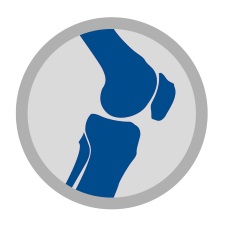The Outcomes of Nonoperative Management of Patients With Hip and Knee Osteoarthritis Triaged to a Physiotherapy-Led Clinic at Minimum 5-Year Follow-Up and Factors Associated With Progression to Surgery
Journal of Arthroplasty
Background The purpose of this study is to determine outcomes of a nonoperative treatment service for hip and knee osteoarthritis (OA), the “Joint Clinic,” at minimum 5-year follow-up, and investigate factors that may influence progression to joint replacement surgery.
Methods This is an observational cohort study of 337 patients with hip (n = 151, 45%) or knee OA (n = 186, 55%) seen at the Joint Clinic, at 5-7 years of follow-up. Kaplan-Meier survival curves were used to determine survivorship of the affected joint and Cox regression used to determine factors associated with time to surgery.
Results At mean 6-year follow up, 188 (56%) patients had undergone or were awaiting total joint arthroplasty, 127 (38%) were still being managed nonoperatively, and 22 (7%) had died without having surgery. Patients with hip OA were more likely to have required surgery (111/151, 74%) than patients with knee OA (77/186, 41%) (chi-square = 33.6, P < .001). The 7-year surgery-free survival for hip OA was 23.7% and knee OA 55.9% (P < .001). Factors associated with increased likelihood of surgery were joint affected (hip, hazard ratio [HR] 2.80), Kellgren-Lawrence (KL) grade (KL 3, HR 2.02; KL 4, 4.79), and Oxford Hip/Knee Score (HR 1.34 for each 5 points worse at baseline).
Conclusion More than 50% of the patients referred to secondary care with mild-moderate knee OA may not need surgery at 7 years. Patients with hip OA and those with severe radiographic changes are more likely to require surgery and should not be delayed if there is not an adequate response to conservative measures.
